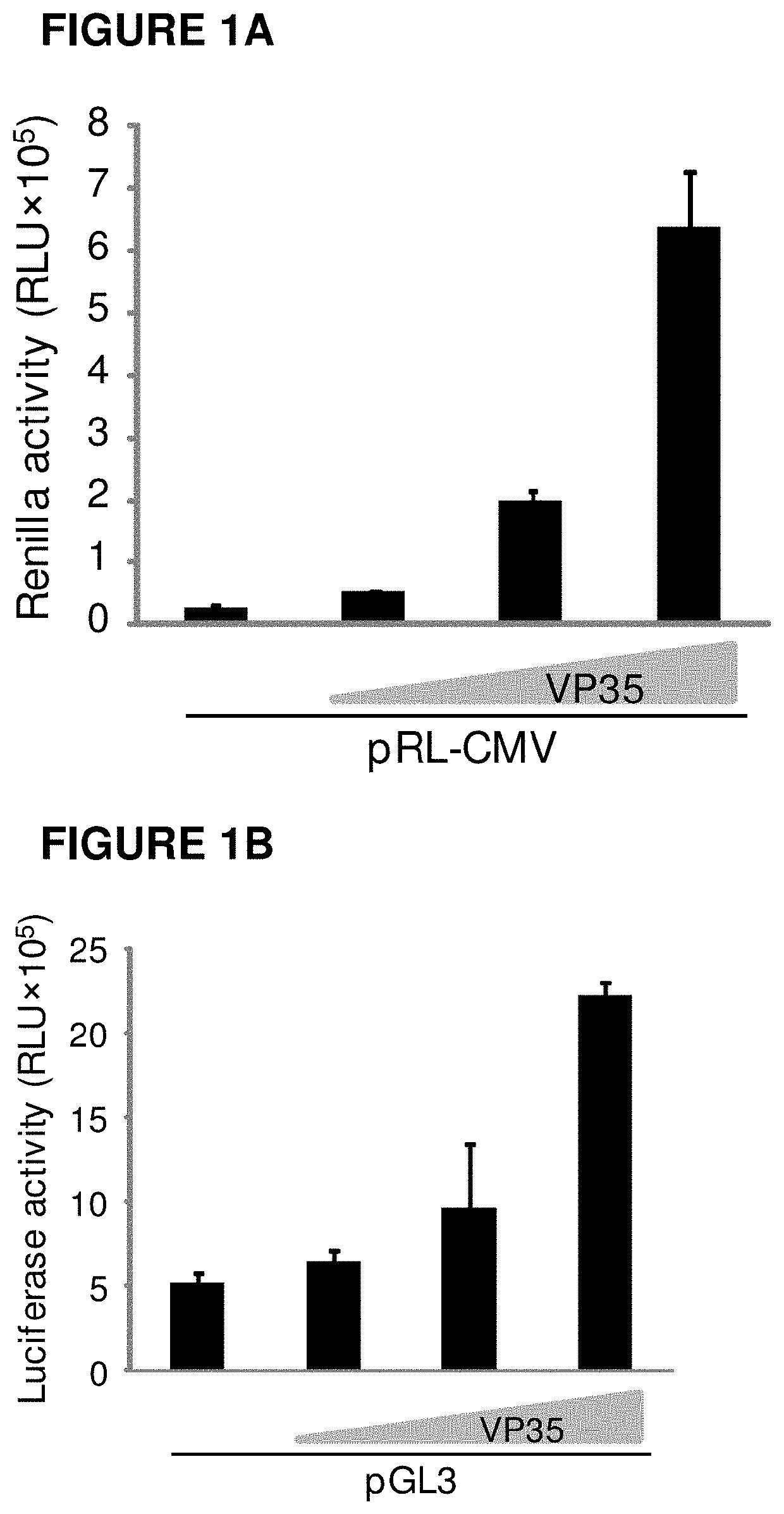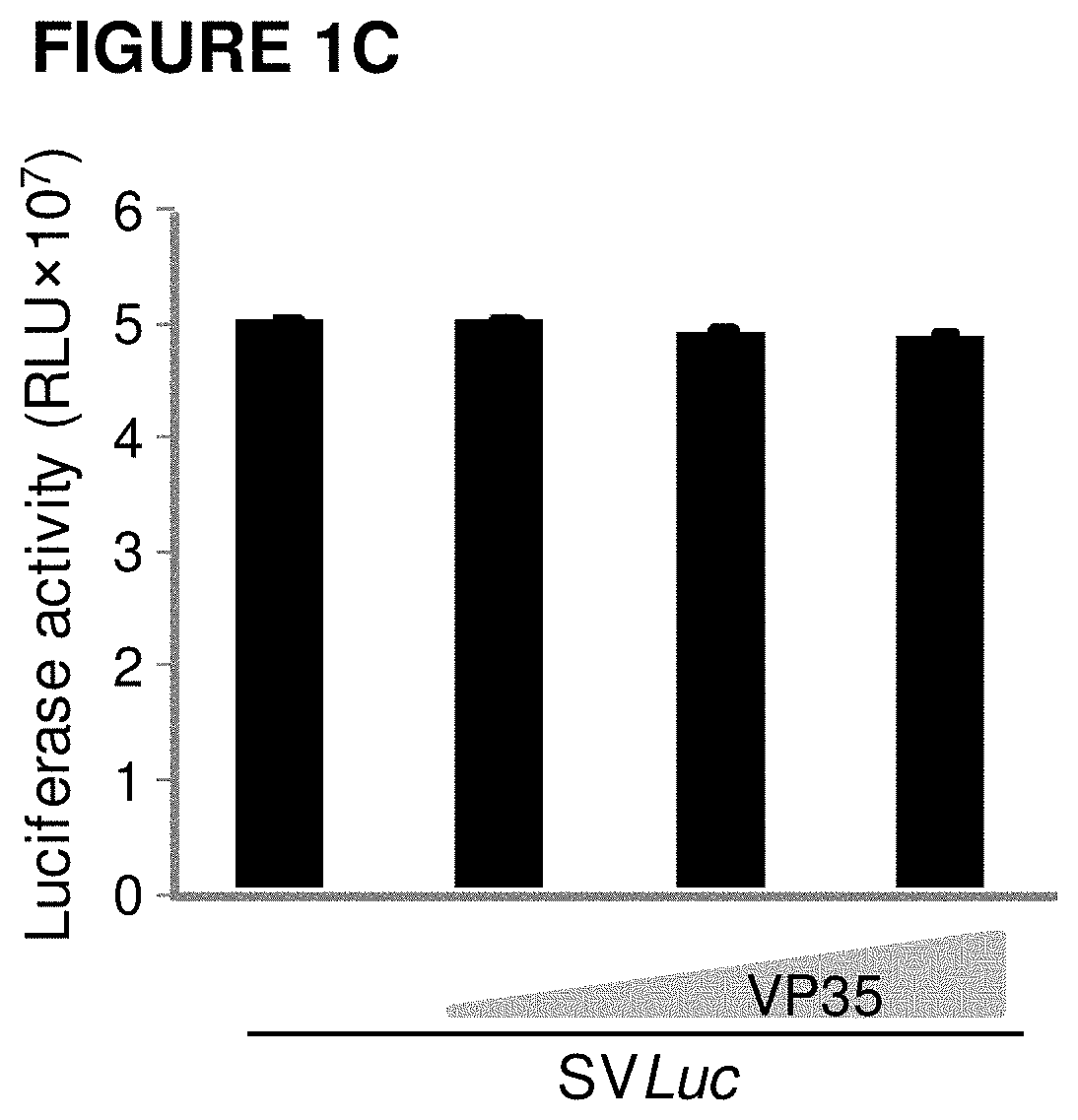Method for Restoring Immune Tolerance In Vivo
a technology of immune tolerance and recombinant proteins, applied in the field of restoring immune tolerance in vivo, can solve the problems of long-term use of immuno-suppressing medications, affecting the immune system, and causing tissue scarification, so as to achieve the effect of restoring immune tolerance and restoring immune toleran
- Summary
- Abstract
- Description
- Claims
- Application Information
AI Technical Summary
Benefits of technology
Problems solved by technology
Method used
Image
Examples
example 1
Construction of the SV40 Derived Gene Delivery Vector
[0136]Six oligonucleotides were designed:
WdV101:(SEQ ID No. 2)CCGCTCGAGTTGCGGCCGCTGTGCCTTCTAGTTGCCAGCCATC
(containing a Xhol and a Notl restriction site) and
[0137]WdV102: GGTACCATAGAGCCCACCGCATCCCCAGCATGCC (SEQ ID No. 3) (containing a Kpnl restriction site) and
[0138]WdV103: GGCCGCTTTATTAATTAAGCCCTGCAGGTTGTTTAAACTTGGCGC GCCTTAT (SEQ ID. No. 4) (contains from 5′ to 3′ subsequently a Notl sticky restriction site, a Padl, SbfI, Pmel and an AscI intact restriction site and a ClaI sticky restriction site) and
[0139]WdV104: CGATAAGGCGCGCCAAGTTTAAACAACCTGCAGGGCTTAATTAAT AAAGC (SEQ ID No. 5) (contains from 3′ to 5′ subsequently a Notl sticky restriction site, a PadI, SbfI, PmeI and an AscI intact restriction site and a ClaI sticky restriction site) and
WdV105:(SEQ ID NO. 6)CGGGATCCAGACATGATAAGATACATTG
(containing a BamHI restriction site) and
WdV106:(SEQ ID No. 13)ATAGTTTAGCGGCCGCAACTTGTTTATTGCAGCTTATAATGG
(containing a Notl restriction site).
[0...
example 3
Molecular Cloning of an SV40 Encoding Luciferase Expression Vector (SVLuc)
[0152]The expression plasmid pGL3 (Promega) was used as template for cloning of the firefly luciferase (Photinus pyralis) into pSVac destination vector by PCR. Two oligonucleotides were designed:
[0153]WdV-070: GGGGACAAGTTTGTACAAAAAAGCAGGCTATGGAAGAC GCCAAAAACATAAAGAAAGGC (SEQ ID NO: 10) and
[0154]WdV-071: GGGGACCACTTTGTACAAGAAAGCTGGGTTTACACGGCGA TCTTTCCGCCCTTC (SEQ ID NO: 11) containing, respectively, AttB1 and AttB2 recombination sequences.
[0155]Purified pGL3 plasmid DNA was subjected to PCR using oligonucleotides WdV070 and WdV071. The purified PCR product was subsequently recombined by a BP reaction in pDONR221 (Invitrogen) to create a luciferase entry clone, pAM007. This entry clone was used for a GATEWAY® LR reaction to recombine the firefly luciferase coding sequence into pSVac-dest (pAM006), resulting in the pSVLuc vector plasmid (pAM008).
example 2
Molecular Cloning of a SV40 Luciferase Expression Vector and the Production of Recombinant SV40 Luciferase Vector Particles
[0156]The expression plasmid pGL3 (Promega) was used as template for cloning of the firefly luciferase using PCR. Two oligonucleotides were designed WdV389: 5′-TTGGCGCGCCATGGAAGACGCCAAAAACATAAAGAAAGGC-3′ (SEQ ID NO: 14) and WdV407: 5′-CCCTTAATTAATTACACGGCGATCTTTCCGCCCTTC-3′ (SEQ ID NO: 15) containing respectively restriction sites Ascl and PacI. The PCR amplified luciferase fragment was subsequently Ascl and PacI digested and ligated into pAM005, resulting in pAM006.
[0157]Two oligonucleotides were designed WdV437 5′ GGGATCCAGACATGATAAGATACATTG 3′ (SEQ ID NO: 16) and WdV442: ATAGTTTAGCGGCCGCAATGAATGCAATTGTTGTTGTTAACTTG (SEQ ID NO: 17) containing respectively BamHI and Notl restriction site. The pSL-PL vector was used as template for cloning of the large T antigen trailer sequence using PCR. The resulting PCR fragment was digested with BamHI and Notl and cloned in...
PUM
| Property | Measurement | Unit |
|---|---|---|
| Composition | aaaaa | aaaaa |
Abstract
Description
Claims
Application Information
 Login to View More
Login to View More - R&D
- Intellectual Property
- Life Sciences
- Materials
- Tech Scout
- Unparalleled Data Quality
- Higher Quality Content
- 60% Fewer Hallucinations
Browse by: Latest US Patents, China's latest patents, Technical Efficacy Thesaurus, Application Domain, Technology Topic, Popular Technical Reports.
© 2025 PatSnap. All rights reserved.Legal|Privacy policy|Modern Slavery Act Transparency Statement|Sitemap|About US| Contact US: help@patsnap.com


